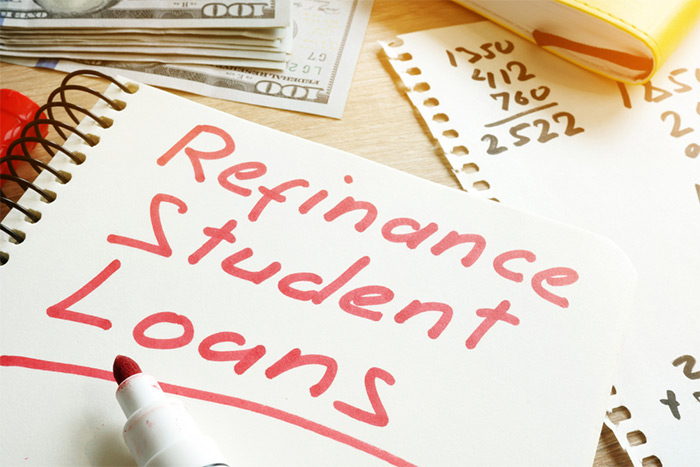A Complete Guide to Loan Forgiveness for Nurses
Nursing school can be an expensive proposition, especially since the majority of students must take out loans in order to attend school. According to a national survey conducted by the American Association of Colleges of Nursing (AACN), the median amount of student loan debt anticipated by graduate nursing students upon completion of their program was between $42,000 and $56,999. That’s a lot of money!

Thankfully, there are many loan forgiveness programs available at both the federal and state levels. Because nurses perform such a critical role in keeping people healthy, many organizations and agencies provide loan forgiveness or cancellation, usually in exchange for serving in underserved areas for a certain number of years.
In this ultimate guide, we’ll discuss federal options for loan forgiveness and explain how to apply for student loan forgiveness for nurses when it comes to each program. Then we’ll give a brief overview of the various programs offered by specific states.
Federal Loan Forgiveness Programs for Nurses
Public Service Loan Forgiveness
The Public Service Loan Forgiveness (PSLF) program forgives the remaining balance on your Direct Loans after you’ve made 120 qualifying monthly payments on your federal student loan under a qualifying repayment plan while working full-time for a qualifying employer. Only payments made after October 2007 qualify for the PSLF program.
To be eligible for PSLF, you must be employed full time at a not-for-profit agency or a U.S. federal, state, local, or tribal government. Nursing is just one of the potential occupations that can fall under a PSLF program — your employer is what matters for this program, not the nature of your job.
You’re considered a full-time employee if you a) meet your employer’s definition of full-time, or b) work at least 30 hours per week, whichever is greater. If you work two qualifying part-time jobs, you’ll be considered a full-time worker, as long as your combined average is above 30 hours a week. Both employers will also need to fill out the PSLF paperwork in that case.
Student loans from private lenders don’t qualify for the PSLF program. Nor do loans from the Federal Family Education Loan (FFEL) Program and the Federal Perkins Loan (Perkins Loan) Program (the Perkins Loan has a separate cancellation process, which we cover below). These non-qualifying loans may become eligible for the PSLF program if they are consolidated into a Direct Consolidation Loan.

National Health Service Corps Loan Repayment Program
Specific types of nurses are eligible for the National Health Service Corps Loan Repayment Program, namely nurse practitioners and certified nurse midwives. To be eligible, they must work in a facility located in a NHSC-approved site that’s been named a designated Health Professional Shortage Area (i.e. the area does not have enough healthcare practitioners to serve the number of residents there). The program requires a two-year commitment. Full-time nurses are eligible for up to $50,000 in loan forgiveness, while part-time workers are eligible for up to $25,000.
NURSE Corps Loan Repayment Program
If you’re a nurse working at a critical shortage facility (CSF) in an underserved community, you might be eligible for the NURSE Corps Loan Repayment Program. Licensed registered nurses, advanced practice registered nurses (such as nurse practitioners), and nurse faculty members with qualifying nursing debt may all apply to the program. All applicants must be employed full-time, working a minimum of 32 hours a week at an approved facility, and agree to a contract of two years. Participants can get up to 60% of their student debt forgiven over their two years of employment. They can also do an optional third year and get an additional 25% of their loans paid off.
Perkins Loan Cancellation
Perkins loans were subsidized loans for undergraduate and graduate borrowers who demonstrated extreme financial need. The loans stopped being issued on September 30, 2017, when Congress failed to pass a renewal. However, if you took out Perkins loans prior to that date, you may be eligible to have some or all of them cancelled if you have served up to five years in a public service job (nursing definitely counts). Nurses must be employed full-time in order to be eligible, and loans are forgiven incrementally over the course of five years. If you took out Perkins loans during school and qualify to have them cancelled, you’ll need to apply directly to the school that made you the loan.
Military Loan Repayment Programs
Different branches of the military offer various loan repayment options for medical personnel. These programs are only eligible for those who haven’t previously served in the military; payments are made on the outstanding principal balance and don’t cover any interest that has already accrued. Payments are made directly to your lender and taxes are withheld for the IRS before payments are made. Here are some programs that might help you pay off your nursing loans:
- Army active duty health professions loan repayment program: Nurses who enlist for active duty for at least three years will get 33.3 percent of their loan principal balance paid by the Army.
- Army reserves healthcare professionals loan repayment program: Nurses who serve in the Army Reserves can get up to $20,000 for two consecutive years of service, plus an additional $10,000 and an extra third year.
- Army reserves college loan repayment program: Nurses who enlist in the Army reserves for six years may receive up to $50,000 to pay college loans.
- Navy nurse candidate program (NCP): Students who are accepted to the Nurse Candidate Program (NCP) can receive up to $34,000 to help pay their way through school.
- Air force active duty health professions repayment program (ADHPLRP): Nurses who participate in active duty for a minimum of two years can receive a maximum repayment of up to $40,000.
State Loan Forgiveness Programs for Nurses
Pretty much every state offers some kind of loan repayment program for nurses, though the amounts can vary pretty widely. Most of these programs (though not all) require nurses to work in a Health Professional Shortage Area (HPSA) that is currently understaffed by medical professionals. Usually nurses agree to a minimum two-year commitment, with the option to work for a longer period of time in exchange for greater loan forgiveness.
See the table below that lists loan repayment programs and the maximum annual amount for all 50 states. We also highlight a few programs in greater detail to give you an idea of how they work.
Alaska: The SHARP-I Program gives nurses up to $20,000 a year in exchange for working a minimum of two years in an HPSA. The SHARP-II program follows a similar set-up, but requires a three year commitment and a 25% match from your employer. The more critical the shortage in the area, the greater the loan forgiveness.
Illinois: Illinois actually offers three different repayment plans for nurses: The Nurse Educator Loan Repayment Program, the Veterans' Home Medical Providers' Loan Repayment Program, and the Illinois National Health Service Corps State Loan Repayment Program. Each program has different eligibility requirements and offers varying repayment amounts.
Kentucky: The state loan repayment plan requires a 50-50 match from an employer or sponsor. So, for every dollar in repayment that the program provides, an employer, foundation, or other benefactor must match that amount. While Kentucky’s set-up is a bit unique, many state programs do require some sort of employer match. Nurses in Kentucky can take advantage of this program if they work in an HPSA for two years, and may receive anywhere between $20,000 and $40,000.

Student Loan Refinancing
If your student loan forgiveness program won’t take care of all your debt (and few programs eliminate it completely), it might be worth considering a refinancing program. In an ideal situation, a refinanced loan will help you get better loan terms and a lower interest rate, reducing the cumulative amount you’ll have to pay over time. If you have multiple loans, refinancing can also consolidate them so you only have to worry about making a single monthly payment.
Refinanced loans are private loans that are issued by a bank, credit union, or other financial institution. The lender pays off your old loan and issues a new one with updated terms and rates. Refinancing isn’t for everyone, but it’s a good option to keep in your back pocket, especially if your loan forgiveness program won’t cover much of the total cost.
Of course, you can also save money in other ways, even while you’re still in school. Buying used textbooks and choosing affordable nursing scrubs will help keep that money in your pocket so you can put it towards an increased loan payment.
While loan forgiveness for nurses may seem daunting, many are eligible for thousands of dollars of help in exchange for just a couple years of work. Due to the public service nature of their job, nurses have many more loan forgiveness options available compared to other professions. Students should definitely take advantage of these programs and learn how to get loan forgiveness for nurses.
Frequently Asked Questions About Loan Forgiveness for Nurses
Can nurses get their student loans forgiven?
Can nurses get their student loans forgiven?
Yes, nurses can qualify for student loan forgiveness through programs like Public Service Loan Forgiveness (PSLF). This program forgives the remaining balance on your federal student loan after making 120 qualifying payments under a qualifying repayment plan while working full-time for a qualifying employer.
Will hospitals pay off student loans?
Some hospitals offer student loan repayment assistance as part of their employment benefits. It’s wise to ask about these benefits when considering job offers from healthcare facilities.
What healthcare jobs qualify for PSLF?
The PSLF program is available to various healthcare professionals, including nurses and doctors. To qualify, you must work full-time for a government organization or a non-profit providing qualifying public services.
What is student loan repayment assistance?
Student loan repayment assistance programs are benefits offered by some employers to help pay off student loans, directly reducing your overall debt.
Are there specific loan forgiveness programs for nurse practitioners?
Nurse practitioners are eligible for federal programs like PSLF and NCLRP, and certain states offer loan repayment assistance for those working in underserved areas.
What if I have private student loans?
For private student loans, consider private student loan refinancing to lower your interest rate and monthly payments, though it doesn’t offer forgiveness options.



